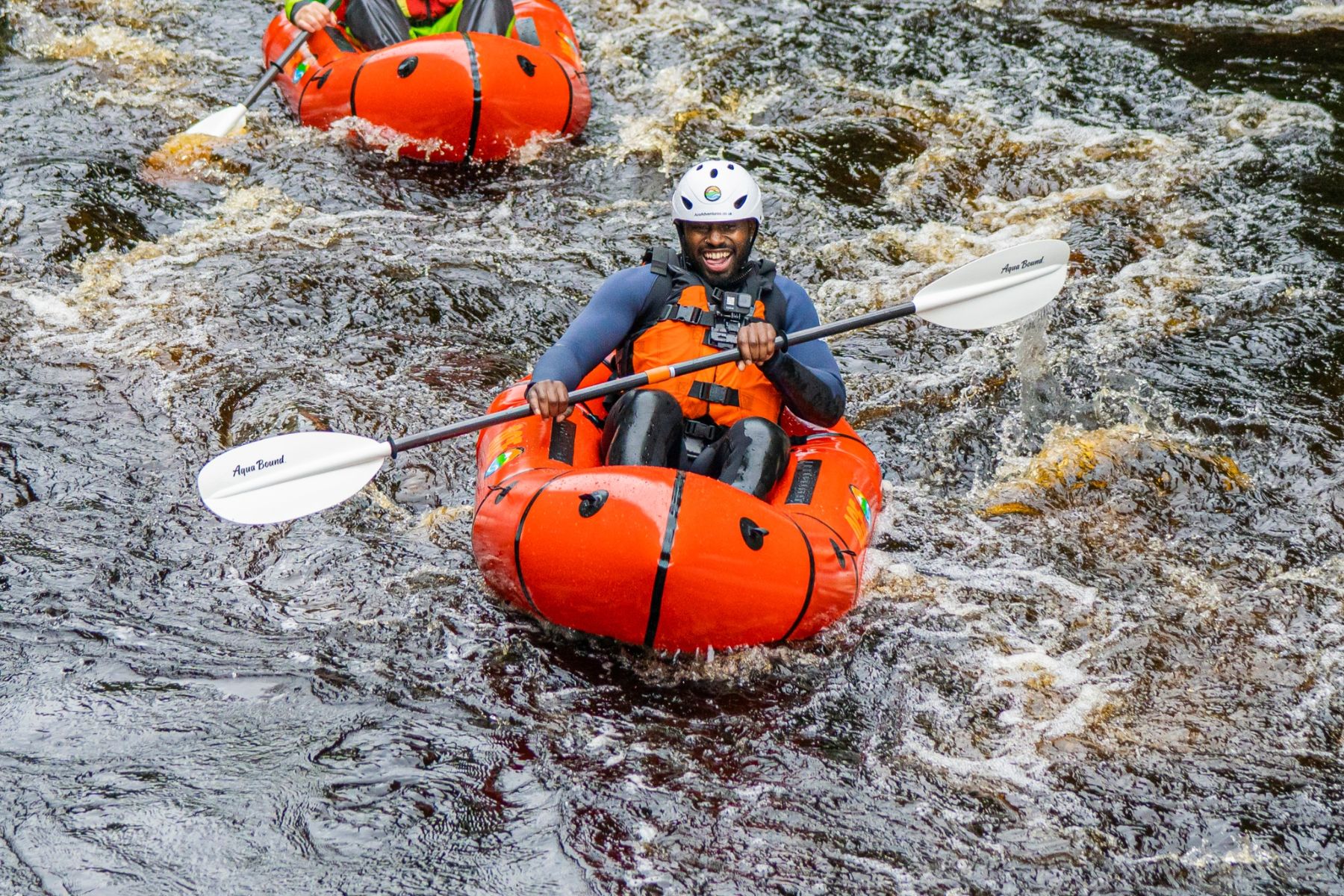Pink-footed geese at Loch Leven
Although Scotland's climate and weather is mostly stable all year round, it is still important to be prepared with the right clothing and equipment, regardless of the weather. Always plan ahead if you're thinking of making a trip to Scotland. Explore when to visit Scotland for more information and inspiration on choosing the time of year you'd like to visit.
Forest Fires: Be Responsible
As the weather gets drier, the risk of wildfire in Scotland increases. Fire can ignite easily, spread fast and burn with high intensity. We're all asked not to light a fire outdoors during prolonged dry periods, and to always fully extinguish cigarettes.
Find out more on preventing wildfires in Scotland
Avian influenza (bird flu)
- Avian flu is a virus that mainly affects birds. Migratory birds, especially water birds, carry different strains of the virus along their migration routes.
- Like many countries across Europe, avian flu is currently affecting birds in coastal areas around Scotland.
- The risk to human health is very low but visitors are advised to not touch or pick up any sick or dead birds and to keep dogs on lead in affected areas.
- For further information and advice visit https://www.nature.scot/doc/avian-influenza-bird-flu
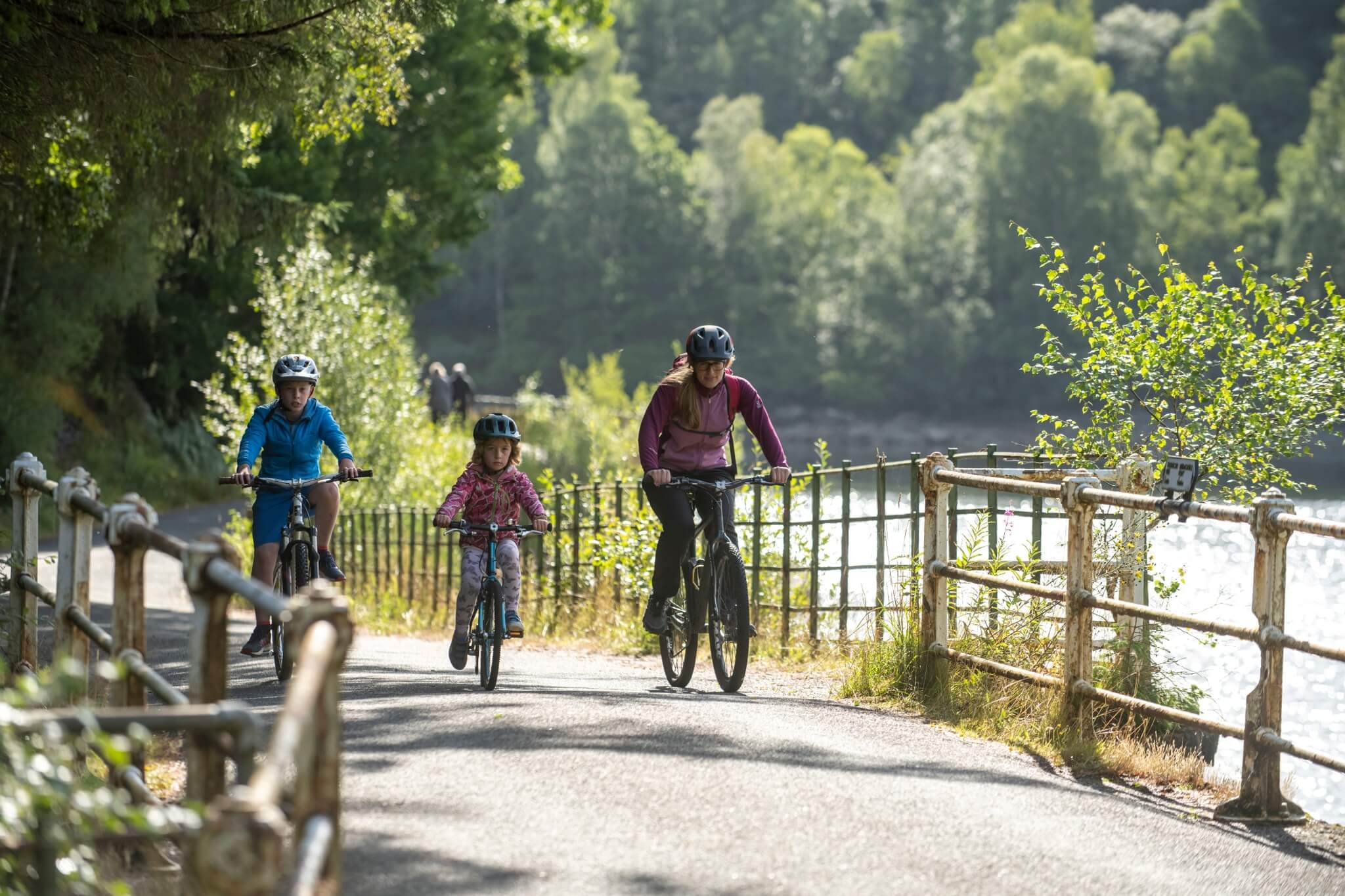
National Cycle Network Route 7
© Sustrans / Andy McCandlish
Why is it important to be aware of your safety during outdoor activities?
Scotland's outdoors are beautiful to explore, but the terrain and changing weather can be dangerous if you're not prepared. We have included a variety of equipment and resources to take with you below as a precaution. You hopefully won't need to use them, but it's always better to be safe and ready for anything.
Is it safe to do outdoor activities with kids in Scotland?
Yes. Lots of outdoor activities in Scotland are safe and great to enjoy with the family, such as watersports, cycling, horse riding and more. But if you're not sure, why not book a tour or day out with an experienced guide who can help you explore the landscapes safely?
What is the Outdoor Access Code?
You have a right of responsible access to most of Scotland’s land and water thanks to the Land Reform (Scotland) Act 2003 and the Scottish Outdoor Access Code, as long as you behave responsibly.
This counts for hills, moors, forests, beaches, woods, rivers and some farmland, and gives you rights to walk, cycle, climb, swim, watch wildlife and more.
It works on three key principles:
- Respecting others
- Caring for the environment
- Taking responsibility for your actions
Find out more on how to be responsible and follow the Scottish Outdoor Access Code for visitors.
Aikenshill House, a guesthouse and working cattle farm.
© VisitScotland / North East 250 / Damian Shields
REMEMBER:
- Always take your rubbish home with you.
- Pick up after your dog.
- Keep a safe distance from any land management operations.
- Never intentionally or recklessly disturb or destroy a plant, bird, animal, or geological feature.
- Don't damage or disturb cultural heritage sites.
GENERAL OUTDOOR SAFETY HAZARDS & THINGS TO BE AWARE OF
There aren't many outdoor safety hazards in Scotland, but it's always best to be mindful of your surroundings.
Wildlife
When you're out and about in Scotland it is important to be mindful of the wildlife that live here and to not disturb them, especially rare species. Observe from a distance and leave the landscape as you found it. Our friends at Wild Scotland have developed some great guidance on respecting our wildlife, when you're out and about.
Ticks
Ticks are tiny insects that live in bushes and often heather across Scotland's landscapes. They can attach themselves to your skin and transmit Lyme Disease so it's important to check around your ankles, legs or anywhere that was exposed or in contact with shrubbery when you get home. You can record if you find any ticks and where with the University of Glasgow to help their studies and research.
Farm Animals
Please respect farmers and farmland by closing gates behind you. Always keep dogs under close control on a lead and don't walk through fields with livestock in them. Farm animals are particularly sensitive during lambing and calving periods. Some cattle can be territorial with their calves so don't try to pet them.
Staying safe/fires
Please don't light bonfires. Take great care when lighting and using barbeques as these can easily get out of control. Avoid using disposable barbeques, but if you have too, ensure it's not in contact with grass or flammable surfaces and dispose of all your litter carefully afterwards. Take extra care around natural hazards and ALWAYS clean up after yourself.
Trails and paths
Waymarked paths are there for a reason, so it is encouraged to follow them. Some trails can be near ditches, cliff edges, busy roads etc.
Wild foods
Scotland's landscapes have many different types of natural plants and food growing, some of which are safe to pick and take home to eat, but only if you know what you are looking for. There are some varieties of berries and mushrooms that are poisonous and are not safe to eat.
OUTDOOR TOILETING
When you've got to go, you've got to go! When spending time in Scotland's great outdoors, it's important to be prepared when nature calls. Failure to dispose of human waste correctly can create lots of germs and parasites leading to gut infections. It can also affect the natural landscape by contaminating water and crops, infect livestock and ultimately take the fun out of hillwalking and camping.
To help keep Scotland tidy, here are a few tips on how to dispose of human waste in a hygienic and environmentally safe way:
- Pack a small trowel, toilet paper and waste disposal bags in your rucksack.
- If you aren't near a public toilet, make sure to find a spot at least 30 metres away from water.
- Dig a small hole with your trowel that is 6 inches (15cm). The hole should be as deep as your hand.
- Once finished, drop in your toilet paper in the hole or bag it and bin it later. Wet wipes and sanitary items should not be buried.
- Fill the hole with the excavated soil.
- Wash your hands with water or use hand sanitiser.
Find out more information on outdoor toileting in Scotland.
Crafty Distillery, Newton Stewart
GENERAL OUTDOOR SAFETY TIPS & ADVICE
Before you head out, there are a few safety tips and advice you should know:
Paths & Trails
Make use of local national walking and cycle routes across the country that are open for people to use. Many of Scotland's forests and valleys are home to hundreds of species of wildlife and plantlife, some of which are rare, so it's important to be mindful of your surroundings.
Plan your visit
Make sure you plan ahead for your trip where sensible. Check if businesses are open, and pre-book tickets in advance if required.
Parking & Facilities
It's also good to know which car parks and facilities are open before you venture out. Please don't park anywhere but designated parking spaces. If an area is busy, please move on and find another location to park.
Know Your Route
if you're planning to venture up a mountain or Munro, make sure you:
- Plan and research the route you want to take before leaving for your trip
- Take a GPS device with you
- Also take a physical map and compass - you can't guarantee your signal will be strong enough throughout the walk, and it's important to know where you are at all times. Make sure you know how to properly use both of these before you head out.
- Have a look at What3Words which provides specific location information using a unique combination of 3 words.
Food & Water
Make sure you head out prepared with plenty of food and water, and even some extra, in case you're out for longer than expected.
Outdoor Safety Tips for Summer
Scotland's summer temperatures can sometime peak quite high, so if you're out for the day, make sure you take sun cream, a hat, lightweight clothes, extra water, and think about stopping to rest and find shade along the way too.
Scottish Fossil Code
Here in Scotland, you’ll find some of the rarest and most important fossil discoveries. On the Isle of Skye, you’ll find Jurassic dinosaur footprints, fragments of an equatorial coal forest in Glasgow or find the bones of 250-million-year-old reptiles that once roamed Elgin.
Fossil collecting is a popular hobby and amateur collectors often uncover rare and scientifically important finds. However, our fossil heritage is vulnerable to irresponsible collecting that can damage our historic sites.
To help manage and safeguard Scotland’s world-renowned fossil heritage, NatureScot have provided guidance on how to collect and look after fossils in a responsible way without damaging them or the areas where they are found.
Find out more about the Scottish Fossil Code on the NatureScot website
Remember
Look after the places you visit and enjoy, and always leave the land as you find it. Our landscapes and historic monuments bring joy to those lucky enough to see them in person.
Read more about responsible tourism and our promise to help protect Scotland.
SPECIFIC OUTDOOR ACTIVITY SAFETY TIPS
Some outdoor activities such as gorge walking, coasteering, airborne activities, bungee jumping, and white-water rafting require specialist information or advice. You can sign up for a course with a guide to accompany you through activity providers. Please do not attempt extreme activities on your own without an experienced instructor.
Find an outdoor activity in Scotland.
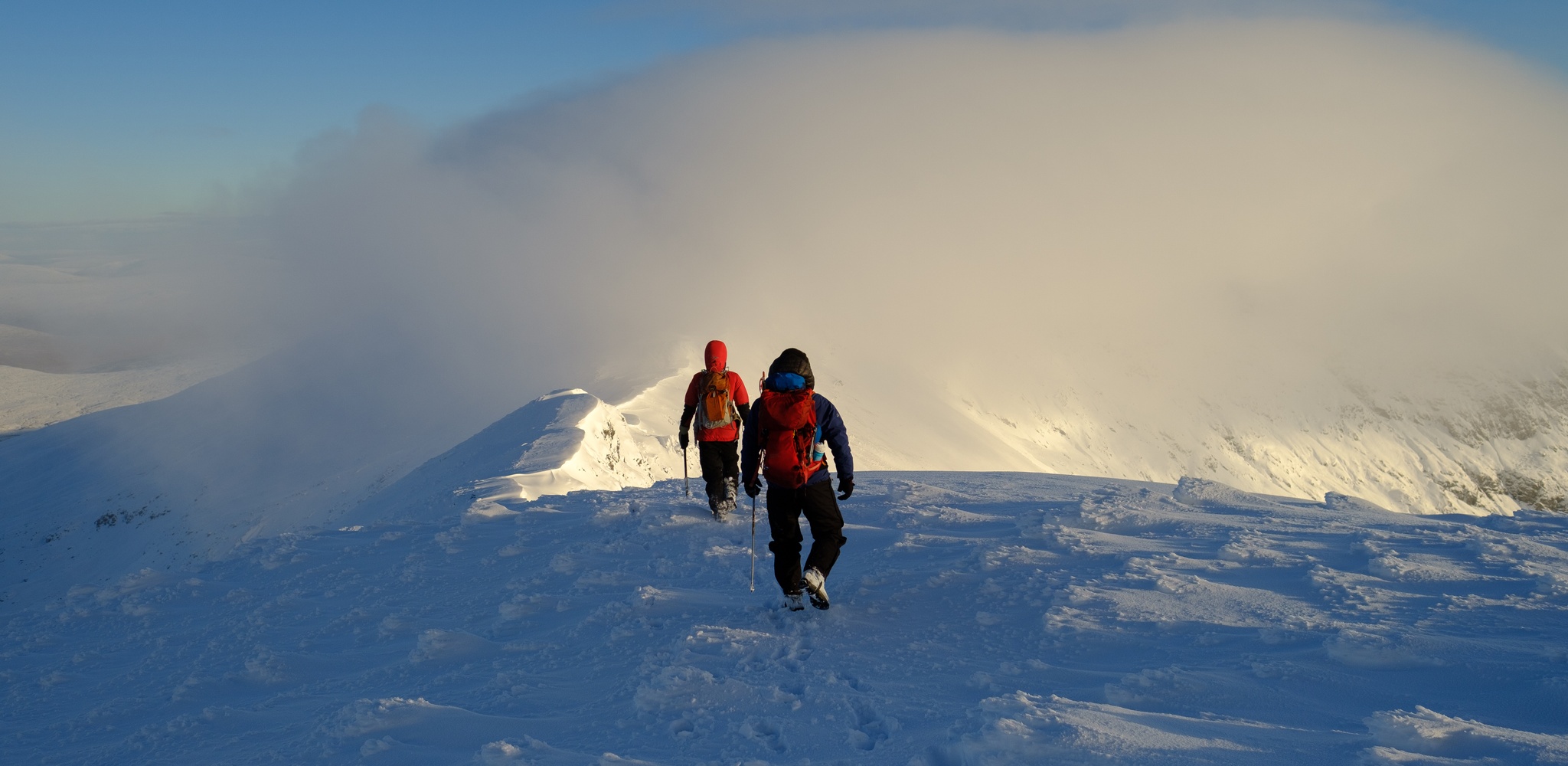
Walking from Conival to Ben More Assynt, Highlands
© Walking from Conival to Ben More Assynt
PREPARE FOR WINTER OUTDOORS IN SCOTLAND
Winter in Scotland is often a magical time of year, with snow-capped peaks, forests turning into winter wonderlands, and Christmas cheer and celebrations filling the air. Our Highlands and northern areas can see a fair bit of snowfall and low temperatures each year, so it is important to be prepared if you're thinking of heading outdoors in winter. Here are some winter weather safety tips:
Weather
Although crisp winter air can be refreshing, it can also become dangerous if you get lost outdoors. Scotland's weather can change very quickly, so plan your trip around the weather; look ahead at the weather forecast before you leave and take the correct clothing, equipment, food and water with you.
Clothing & Equipment
If you're planning on going hiking, climbing or backcountry skiing in winter, make sure you wear the right clothing: lots of warm layers, waterproof jacket and trousers, warm hat, scarf or balaclava, gloves, thick wooly socks, and sturdy hiking boots with a good grip. Crampons and an ice-axe for gripping the snow and terrain may also be good pieces of equipment to bring with you. A decent sized, comfortable backpack with food, water, maps, compass, torch, and a packable survival shelter or survival bag is essential. The cold weather can also prevent batteries from working in mobile and GPS devices, so bringing a map is important.
Travel
The weather can cause some roads to close, affecting your travel there or back on the day. Check the forecast before you leave, plan out an alternative route or make your trip another day when the weather is less extreme.
You can also take part in a winter survival skills course, learning everything you need to know about Scotland's outdoors.
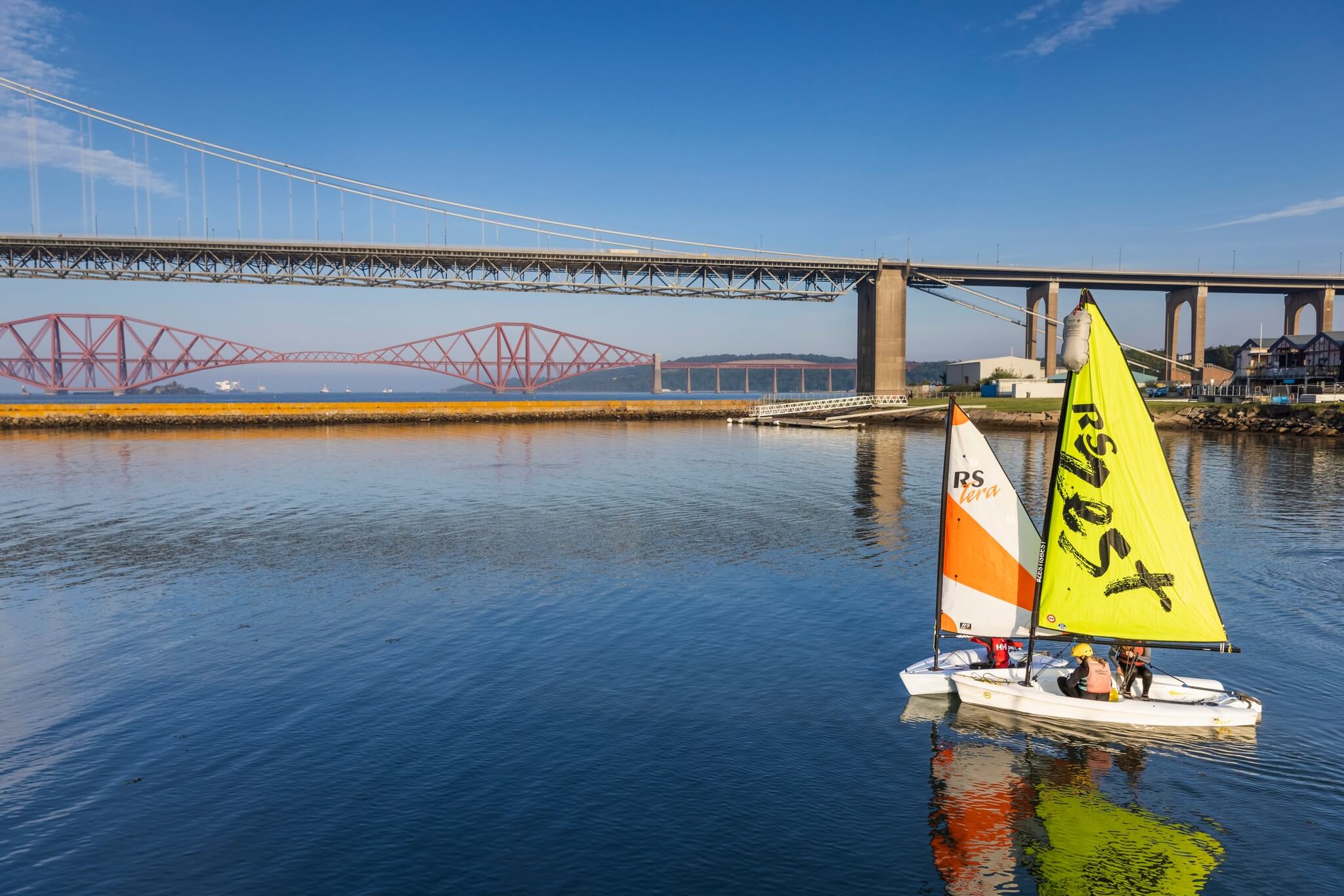
Port Edgar in South Queensferry
© VisitScotland / Kenny Lam
STAY SAFE IN THE WATER
It is always important to be careful when around bodies of water. Scotland's countryside is home to many lochs, rivers, canals, and reservoirs which are a pretty sight to see, but please be especially careful when exploring with young children and people who are unable to swim.
Please read and follow any water safety advice, guidance and signage to keep yourself and others safe. Our coasts and waters are great places to visit for all the family, but make sure you plan ahead on tide times and temperature changes throughout the year. For more information, safety guidelines and helpful advice, visit:
OUTDOOR SWIMMING SAFETY ADVICE
The crisp sea waters and calm lochs across Scotland are often enticing for a dip or swim, especially on a warm day. Whilst wild swimming in Scotland is allowed, there is some outdoor swimming safety advice you should follow:
Take a mate
It is important to never swim alone, even if you are an experienced swimmer. Tides and temperatures can change quickly, so it's always useful to be with someone else in case you get into trouble. Plus being with friends always makes things more enjoyable!
Take it slowly
If you're new to the sport it's a good idea to take things at a slower pace. Go in and out of the water quickly for your first few swims to adjust to the cold water, and stay close to the shoreline too.
Research your destination
Read up on places to go wild swimming in Scotland, or take recommendations from other experienced swimmers, especially if you're just starting out. There are also community groups so you can meet up with like-minded people too. It is also good to research parking options and facilities nearby.
Nature
If you're swimming in the sea, be mindful of any local wildlife you may encounter. On the west coast you may come across basking sharks; they're not dangerous but a fin poking out the water might give you a fright! Also nesting grounds can be found in bushes and treelines near the shore, so make sure you don't disturb any habitats. In the summer, watch out for poisonous blue green algae and avoid swimming near it.
Be seen
Wearing a colourful swim cap can help you be seen by other people, boats and lifeguards on the water, and by people on the shore. Also having a colourful safety 'tow' float, similar to an inflatable buoy, so that people can see you in the water.
Stay warm
Even in the summer months, water in and around Scotland can drop to chilling temperatures, and jumping in and out of cold water can have an effect on your body. Make sure you pack a towel and a warm change of clothes for after your swim. Even a warm flask of hot chocolate or tea wouldn't go a miss!
Did you know bodies of water below 15°C are defined as cold water and can seriously affect your breathing and movement? Cold Water Shock can affect swimmers of all abilities and can be lethal if you don't know how to react properly. Remember, check weather and water conditions before heading out, wear an appropriate wetsuit, and take a floatation device too.
Find out more about respecting the water and how to enjoy Scotland's lochs and beaches safely.
WHAT TO WEAR FOR WILD SWIMMING AND WATERSPORTS IN SCOTLAND?
It is important to wrap up warm for wild swimming in Scotland. A wet suit, swimming costume, warm clothing for afterwards, towels, goggles, flip flops or sandals, and a warm jacket are essential things to pack. It is also a good idea to bring a warm drink and sugary snacks for afterwards too.
Watch how to stay safe in Scotland's waters for more information and top tips.
If you're planning to enjoy a spot of fishing or watersports such as canoeing, sea-kayaking, paddleboarding and sailing, make sure you wear a buoyancy aid or personal flotation device. Those enjoying adrenaline watersports such as kayaking, canyoning, gorge-walking and whitewater rafting should also wear a buoyancy aid and a suitable helmet.
Canisp, Cul Mor and Cul Beag seen from Stac Pollaidh
HOW TO EXPLORE THE SCOTTISH MOUNTAINS SAFELY
Our towering mountains and majestic Munros are real feats of achievement to conquer, and they're a great way to experience panoramic views for miles around you. If you want to know how to climb a mountain safely, read our sections further up about outdoor safety tips and how to prepare for heading outdoors in Scotland.
We've compiled a few more important points you should know:
- Although the weather may seem nice and warm on the ground, the climate and temperature can be a lot different if you're up a 3,000 ft mountain.
- Hiking can be harder work than you think, and a lot of these mountain trails can be 4+ hours long, so make sure you take plenty of food and water with you.
- Conditions can change rapidly at higher altitudes, especially in winter, so make sure you know where you're going and have the correct equipment with you.
- Map out your route and be aware of what the terrain is like. It may also be a good idea to let a friend or family member know where you're going, what your planned route is and what time you plan to be back.
Find out more about mountaineering safety with Scottish Mountain Rescue.
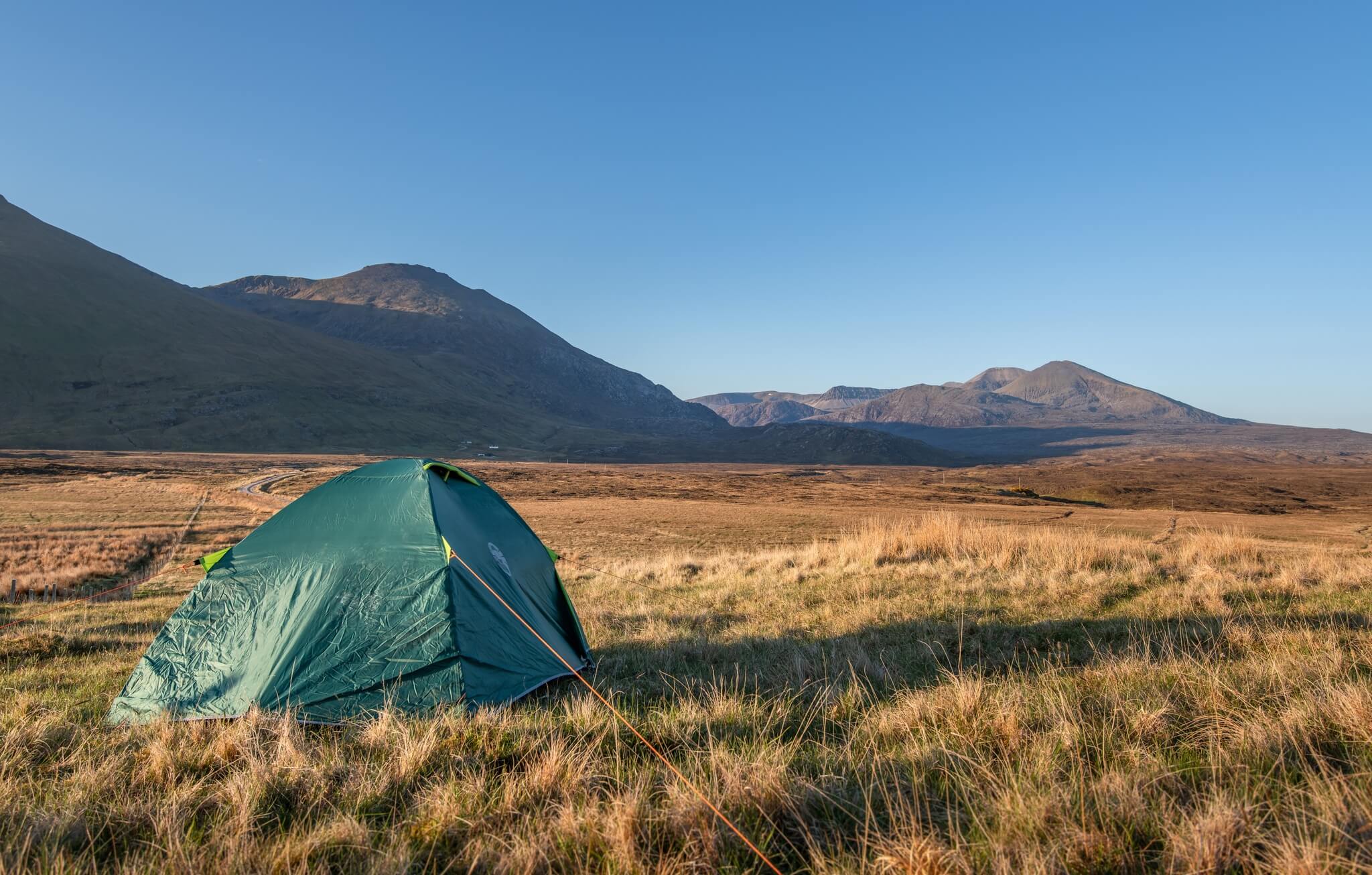
Camping in the North West Highlands Geopark
© VisitScotland / Airborne Lens
IS WILD CAMPING SAFE IN SCOTLAND?
Overall, yes wild camping in Scotland is safe, and a fantastic way to reconnect with nature and escape the busy cities. However, there are some rules and guidelines you should follow to stay safe, look after the environment and be a responsible traveller.
- Follow the Scottish Outdoor Access Code.
- Leave no trace: this means leaving no equipment, waste, food packaging, or general rubbish out in the landscape. This can damage wildlife habitats, the environment and spoils the setting for other visitors.
- Use a stove rather than an open fire and never light an open fire during dry periods or in sensitive places like forests or peaty ground.
- Some land may look rural or remote but can still be owned by farmers or landowners, so please be aware of your surroundings.
- Take care with toilet hygiene and use public toilets where possible.
WHAT TO PACK FOR WILD CAMPING IN SCOTLAND?
If you do decide to wild camp in Scotland, it is essential you are prepared for the landscape and weather.
Equipment such as a tent, sleeping bag, cooking stove, route map, compass, food and supplies, and water are very important to take with you. Some mountain stream water is safe to drink but it is important to check your surroundings first. Read up on how to drink water safely outdoors.
The forested area around Feshiebridge
© VisitScotland / Paul Tomkins
HOW TO STAY SAFE WHILE CYCLING IN SCOTTISH NATURE
Cycling is a great form of exercise as well as an eco-friendly way of exploring Scotland's trails. You can bring your own bike with you, or there are plenty of places to hire a bike too. Cycling in Scotland is a popular pastime and there are plenty of routes to explore, most of which are easily accessible from local towns and cities. If you are heading out on the trails, here are some safety precautions to consider:
Equipment
Wear a helmet, take a cycle repair kit with you in case of a tyre puncture, wear reflective clothing or have reflective strips on your bike or helmet, and carry out pre-ride bike checks too.
Bike Theft Prevention
It is essential to take precautions when leaving your bike unattended. Read the official guidance on protecting your bike, including how to properly secure and store it, from Police Scotland. You can find more safety and security tips in this guide by Aye Glasgow Cycle.
Routes
Choose a trail that is suitable for your cycling level and abilities. Take a map, GPS device, and scope out your route before you leave. Be sure to follow the Forest Cycling Code from Forestry and Land Scotland to stay safe when exploring country and woodland locations by bike.
WHAT TO WEAR CYCLING IN SCOTLAND?
What to wear cycling in Scotland can be versatile and is up to you. It is good to consider where you will be cycling, what the weather forecast is set to be and what time of year too.
Wear comfortable clothing to cycle in, take warm clothing or a jacket with you for when you finish, suitable cycle shoes that can grip the pedals, waterproofs, sun cream, sunglasses, and a hat.
Find out more about cycling road safety in Scotland before you head off.
FIND MORE INFORMATION ABOUT OUTDOOR SAFETY IN SCOTLAND
We hope we've covered all the general information on how to stay safe outdoors in Scotland, but you can find more specific guidelines, information and advice at:
- Forestry and Land Scotland
- NatureScot
- Scotland's National Nature Reserves
- Cairngorms National Park
- Loch Lomond & The Trossachs National Park
- RSPB
- National Trust for Scotland
- Historic Environment Scotland
Remember: always follow the Scottish Outdoor Access Code and enjoy our great outdoors - we're all very lucky to have them!
